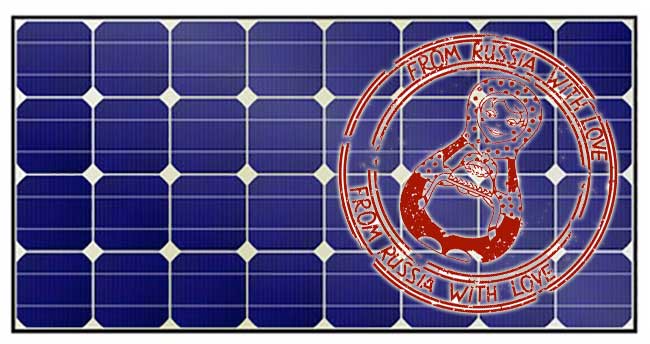One of the many advantages of solar energy is its charge down the cost curve as new technologies outstrip old in performance and cost. This week at SQHQ we’re dusting off the crystal ball and looking into the future of solar power. Specifically we’ll be checking out perovskite; the “new kid on the block” (with all the rave reviews). Perovskite is considered to have the potential to replace silicon in solar cells.
What is perovskite though? Not a Russian KGB asset as your correspondent first thought but a mineral which was discovered in the Ural Mountains in 1839. However it is only recently that researchers have found the substance can be used as an efficient conductor of sunlight. Eminent science teams around the world are now racing to produce perovskite cells to a level of efficiency at conducting electricity as silicon.
While the science as to why this is so is a little complex, it involves nanoparticles and diffusion and things and therefore beyond your humble correspondent scope (no truth in the rumour that I was approached for a job in the science ministry by the way), the key point is one that all solar fans understand. That the current cost of producing solar cells could be brought down by as much as three quarters by using perovskite.
The claim is made in the respected Science journal by Henry Snaith on behalf of his team of researchers at the UK’s eminent Oxford University. Snaith claims an efficiency of around 15 percent — an improvement of the 10 percent usually reached by silicon. But wait there’s more (as they say in the steak knife commercials) as this Economist article of 28 October reports Snaith has predicted a rise to 25 percent in the near future.
As discussed in the beginning of the rant the rapidly cost efficient nature of solar cell technology is making the clean energy alternative more accessible. Previously considered to be the preserve of the elites (mostly because of the high cost) solar narks’ continued attempts to paint solar energy as only for the rich already belongs in the realm of ancient history. This will only be accelerated of course should the claims of perovskite come to fruition.
However there is of course one further major point to be made. With perovskite leading the way as the latest breakthrough, the advantages of solar energy that is both cheap and clean is that the sector will rely less and less on fickle government subsidies. We at SQHQ have been banging on about this for years. We’ve ranted about the federal and state chair polishers (sorry politicians) seeming to enjoy holding the renewable energy sector to ransom. I’m talking here of the making available of solar subsidies and then withdrawing them at will (and I’m looking at you Newman, O’Farrell et al).
Will bringing down the cost of solar cells by three quarters (as predicted) contribute to the freeing up of any reliance on the state for funding and incentives? The breaking of the shackles? We’d like your opinion on this potential breakthrough either here or over at our Facebook Page.


 RSS - Posts
RSS - Posts



Wouldn’t it be great if it reduced panel size? Any chance this potential breakthrough might result in smaller panels with higher wattage? We’ve been waiting for (at least) 300w panels, before taking the next step at our home property. Yes, cost is a greater consideration in the big picture, but practicality and aesthetics count, too. Please keep us all updated on developments, Rich… .
NB: Remember Dyesol? It was supposed to be the next quantum leap forward, initially proposed as a spray-on ‘dye’ which would transform any flat surface, including glass, into a solar panel. Their shares went sky-high overnight, but last time I looked, they’d lost $9mil… . (For a glimpse of its past, google DYE ASX and hit on MAX to see the rise & fall of this very interesting stock… .)
Every poly silicon solar module today has a 16% efficiency. So what’s the buzz. I will believe it when I can buy products for cheap in a shop with 25 years lifetime warranties.
The point is that solar today is already very efficient and economically viable. No need to wait for a miracle. What we need is deploy, deploy, deploy, research, deploy, not the other way around.
What are we going to do when the rush to Perovskite starts? No one will want the old panels, so it follow someone will be left holding a factory full of duds!
….um, I’d be willing to buy a couple of shiploads of those “duds”…..at the right price. 😉
Thanks SV,WA. Some interesting follow up potential there.
Hey, we _have_ deployed! 🙂
We’ve put 48 panels on rentals… and helped fund a 7.2 kW system atop our local school.*
And remember that Dyesol has been operating for nearly a decade. There’s nothing wrong with R & D:
“Currently, the official accredited World Record Efficiency is 14.1% however efficiencies exceeding 15% are being achieved in the laboratory, and experts are forecasting well beyond 20% as achievable not too distantly…”
* WA Gov’t introduced a sneaky retrospective after the system was completed, limiting feedback tariffs to systems < 5 kW… !
Does anyone know what happened to this scheme? (It looked promising enough to invest in at the time.) http://www.abc.net.au/local/audio/2010/03/02/2834502.htm